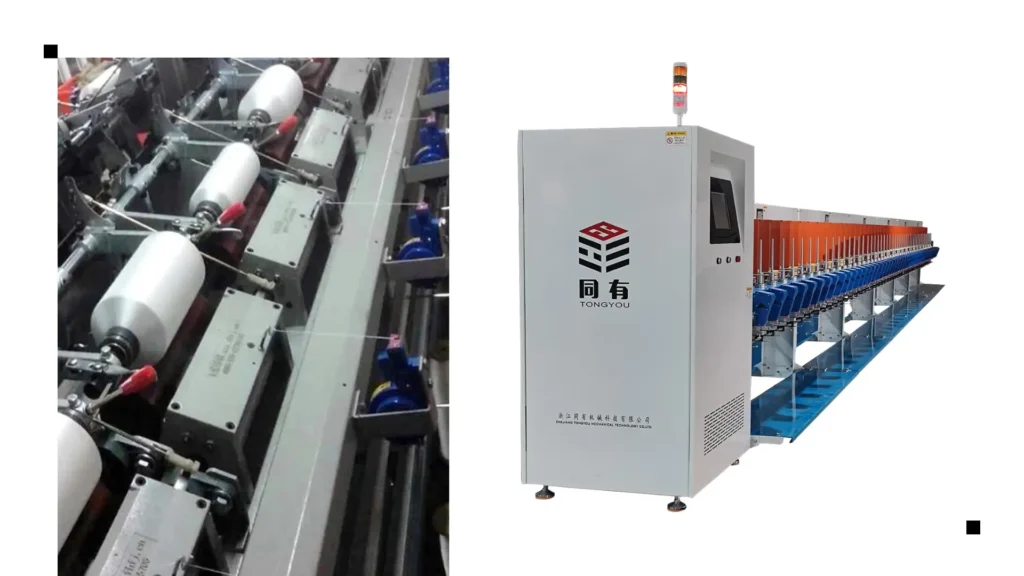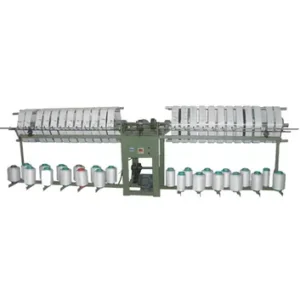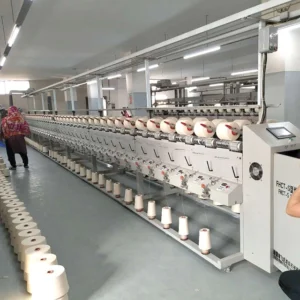The textile industry is one of the world’s largest consumers of water, with traditional dyeing and finishing processes using up to 200 tons of water per ton of fabric.
As environmental concerns grow and water scarcity becomes more pressing, manufacturers are adopting innovative approaches to dramatically reduce water consumption.
This guide explores practical, cost-effective water-saving strategies that maintain quality while cutting usage by 30-50%.
Why Is Reducing Water Usage Critical for Textile Manufacturers?
Growing Water Scarcity Concerns
As climate change and population growth intensify, many regions are grappling with severe water shortages.
This scarcity poses significant challenges for textile manufacturers, who often rely on large volumes of water for dyeing and finishing processes.
In areas where water is becoming increasingly scarce, manufacturers must prioritize conservation to ensure sustainable operations.
Compliance With Environmental Regulations
In response to growing environmental concerns, governments and international bodies are implementing stricter regulations regarding water usage and wastewater management.
Many countries are setting ambitious water reduction targets that manufacturers must meet to comply with local and global standards.
Failure to adhere to these regulations can result in hefty fines, legal repercussions, and reputational damage.
Cost Savings Opportunities
Reducing water usage is not only environmentally beneficial but also financially advantageous for textile manufacturers.
High water consumption leads to elevated utility bills and significant expenses related to wastewater treatment.
The savings generated can then be reinvested into other areas of the business, such as innovation and sustainability initiatives.
And More:
- Ways to Achieve Carbon Neutrality in the Textile Industry
- Strategies for Tracking and Minimizing Energy Use in Textile Manufacturing Facilities
- How to Implement Energy-Efficient Practices in Textile Factories
How Can Low-Water Dyeing Technologies Help?
Supercritical CO₂ Dyeing
Supercritical CO₂ dyeing is an innovative technology that uses pressurized carbon dioxide instead of water as a solvent for dyeing textiles.
This method eliminates the need for water entirely, thus generating no liquid waste.
As a result, it not only conserves water but also reduces the environmental impact associated with traditional dyeing processes, such as water pollution.
Air-Dye Technology
Air-dye technology offers a revolutionary approach to dyeing fabrics by utilizing specialized systems that transfer dye to the material using air, drastically reducing water consumption by up to 95% compared to conventional methods.
This technology not only conserves water but also minimizes the energy required for drying, leading to further resource savings.
By adopting air-dye technology, manufacturers can significantly lower their environmental footprint while maintaining high-quality dyeing results.
Digital Printing Advancements
Digital printing has emerged as a game-changer in the textile industry, allowing for precise and efficient dye application.
This method can reduce water usage by up to 75% compared to traditional screen printing techniques.
Digital printing minimizes waste by applying only the necessary amount of dye directly onto the fabric, resulting in less water and chemical usage.
What Role Does Fiber Selection Play?
Choosing Naturally Less Thirsty Fibers
The selection of fibers plays a crucial role in the sustainability of textile manufacturing.
Fibers like lyocell and hemp are gaining popularity due to their significantly lower water requirements during production compared to conventional cotton.
Lyocell, derived from sustainably sourced wood, is produced in a closed-loop process that recycles water and solvents, minimizing waste.
Hemp, known for its rapid growth and resilience, requires less irrigation and can thrive in poorer soil conditions.
Recycled Fiber Advantages
Utilizing recycled fibers presents a compelling advantage in water conservation within the textile industry.
Reprocessed materials, such as recycled PET bottles turned into polyester, need minimal additional water during the manufacturing process.
This reduction is possible because the fibers have already been processed once, meaning less water is required for dyeing and finishing compared to virgin fibers.
Manufacturers who prioritize recycled fibers not only enhance their sustainability efforts but also appeal to environmentally conscious consumers looking for more sustainable fashion choices.
Synthetic Fiber Innovations
Recent advancements in synthetic fibers have led to the development of new polyester variants that are designed to require less water during dyeing processes.
These innovative materials incorporate technologies that enhance dye uptake and affinity, allowing for more efficient use of water.
As these innovations continue to evolve, they offer manufacturers the opportunity to produce high-performance textiles with a lower ecological footprint.
How Are Manufacturers Optimizing Existing Processes?
Countercurrent Washing Systems
Manufacturers are increasingly adopting countercurrent washing systems as a means to optimize water use in textile processing.
This system allows water to be reused multiple times by passing it through progressively dirtier batches of fabric.
As cleaner fabrics are washed first, the water becomes increasingly contaminated, yet still effective for subsequent washes.
Enzymatic Pretreatments
Enzymatic pretreatments are revolutionizing the way textiles are prepared for dyeing by utilizing biological processes that replace traditional, water-intensive chemical scouring.
These enzymes effectively remove impurities and prepare the fabric for dye application without the need for large volumes of water.
The use of enzymatic treatments not only conserves water but also reduces chemical usage, making the process more environmentally friendly.
Smart Process Control
The implementation of smart process control technologies is transforming how manufacturers manage water usage in textile production.
Automated systems are now capable of precisely metering water, delivering it only when and where it is needed in the production process.
This targeted approach minimizes waste and ensures optimal water use throughout various stages of manufacturing.
What Water Recycling Technologies Are Most Effective?
Membrane Filtration Systems
Membrane filtration systems represent one of the most effective technologies for water recycling in textile manufacturing.
These advanced filters utilize semi-permeable membranes to separate contaminants from process water, allowing for the recovery of up to 90% of the water used in various processes.
This reclaimed water can then be treated and reused for dyeing, washing, or other applications, significantly reducing the demand for fresh water.
Evaporative Recovery
Evaporative recovery is a cutting-edge technology that captures and condenses water vapor generated during drying processes.
As fabrics are dried, moisture is released into the air; evaporative recovery systems harness this vapor, cooling it to convert it back into liquid water.
This recovered water can be reused in the manufacturing process, further reducing the need for fresh water.
Closed-Loop Systems
Closed-loop systems are designed to completely recycle water within specific textile processes, minimizing the need for additional makeup water.
In these systems, water is continuously circulated and treated as it moves through various stages of production, allowing for maximum reuse.
Because they rely on minimal external water input, closed-loop systems can significantly reduce overall water consumption and wastewater generation.
How Does Equipment Modernization Reduce Usage?
High-Pressure Low-Liquor Machines
The modernization of dyeing equipment with high-pressure low-liquor machines represents a significant advancement in water efficiency.
These new-generation machines are designed to use up to 70% less water per kilogram of fabric compared to traditional dyeing methods.
This modernization not only conserves water but also streamlines the dyeing process, improving productivity and cost-effectiveness for manufacturers.
Continuous Processing Lines
Continuous processing lines are another innovation that helps reduce water usage in textile manufacturing.
Unlike traditional batch processes, which involve multiple water-intensive steps, continuous lines allow for the uninterrupted flow of materials through the production stages.
This approach eliminates the need for repeated rinsing and washing, significantly cutting down water consumption.
Smart Water Monitoring
Smart water monitoring technologies are revolutionizing how manufacturers manage their water usage.
By employing real-time sensors, companies can optimize water flow rates, ensuring that only the necessary amount is used at any given time.
By integrating smart monitoring solutions into their operations, manufacturers can achieve a more precise and efficient water management strategy, reducing overall consumption while maintaining high standards of quality and production efficiency.
What Alternative Chemical Approaches Save Water?
Water-Free Finishing
Water-free finishing technologies, such as plasma and UV treatments, are transforming textile processing by replacing traditional wet chemical applications.
Plasma treatments utilize ionized gas to modify the surface properties of fabrics without the need for water, enhancing characteristics such as durability and stain resistance.
These methods not only save significant amounts of water but also reduce the environmental impact associated with chemical runoff.
Concentrated Dye Formulations
The development of concentrated dye formulations is another innovative approach that significantly reduces water usage in textile dyeing.
These new chemistries are designed to dissolve effectively with minimal amounts of water, streamlining the dyeing process.
Because they require less water for both dissolution and rinsing, concentrated dyes help manufacturers cut down on water consumption while maintaining vibrant and consistent colors.
Biodegradable Processing Aids
Biodegradable processing aids are gaining traction as a means to eliminate the need for multiple rinses traditionally required to remove hazardous chemicals from textiles.
These eco-friendly additives facilitate efficient dyeing and finishing processes, allowing for quicker and more effective removal of residual chemicals without excessive water use.
This innovative approach not only improves water efficiency but also enhances the safety and ecological impact of textile production.
How Can Manufacturers Implement Changes Gradually?
Water Audits and Benchmarking
Conducting water audits and benchmarking is a critical first step for manufacturers looking to implement gradual changes in water management.
This data-driven approach allows manufacturers to prioritize their efforts, focusing on areas with the greatest potential for water savings.
Through benchmarking against industry standards, companies can set realistic goals and measure their progress over time, ensuring that their water conservation initiatives are effective and impactful.
Pilot Testing New Technologies
Before fully implementing new technologies aimed at reducing water usage, manufacturers can benefit from pilot testing on a smaller scale.
By running trials, companies can validate the water savings and operational efficiency of innovative solutions in real-world conditions.
This approach allows manufacturers to assess the feasibility and effectiveness of new technologies without committing significant resources upfront.
Employee Training Programs
Engaging employees through training programs is essential for fostering a culture of water conservation within manufacturing operations.
Training programs can cover topics such as efficient machine operation, leak detection, and the proper use of water-saving technologies.
By involving employees in the conservation process, manufacturers not only enhance their water-saving efforts but also create a sense of ownership and responsibility among their workforce, driving long-term positive change.
Also Read:
- How to Source Sustainable Raw Materials for Textile Manufacturing
- The Impact of Automation on Reducing Carbon Emissions in Textile Factories
Conclusion
Reducing water usage in textile manufacturing is no longer optional—it’s an environmental and economic imperative.
By combining innovative technologies, smarter processes, and responsible fiber choices, manufacturers can achieve dramatic water savings while maintaining product quality and profitability.
The solutions exist today; the key is implementing the right mix of strategies for each facility’s specific needs and capabilities.












